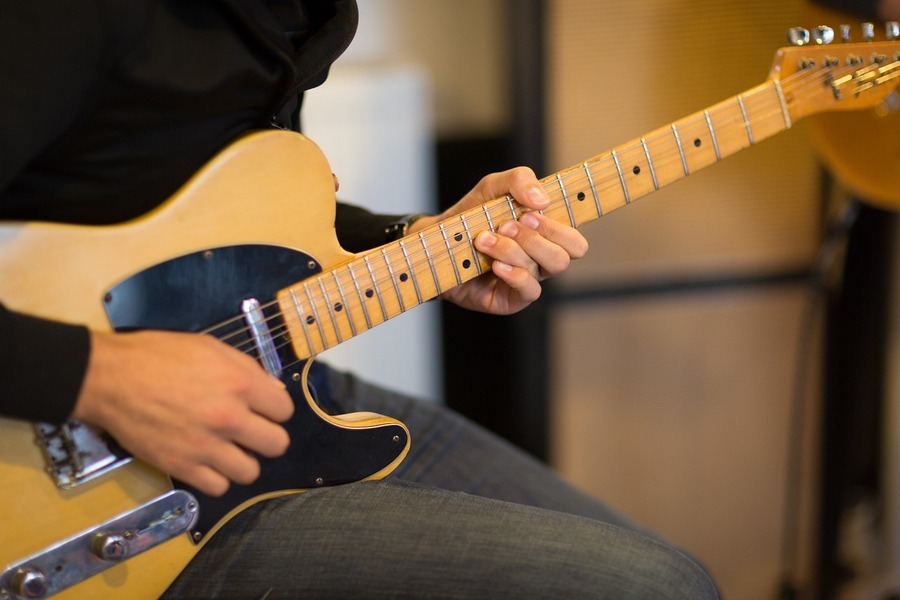Guitar harmonics are a fascinating and essential technique for adding variety and depth to your playing. Harmonics create bell-like tones that can embellish melodies and provide unique sound textures. In this article, we’ll explore the techniques to perform guitar harmonics and their applications in music.

Understanding Harmonics
Harmonics are produced by lightly touching the string at specific points, called nodes, while plucking the string. These nodes are located at fractional divisions of the string length, such as halfway (12th fret), a third (7th fret), and a quarter (5th fret). When performed correctly, harmonics generate a higher-pitched tone than the fundamental note.
Types of Harmonics
There are several types of harmonics you can perform on the guitar:
- Natural Harmonics: These are the easiest to play and are found at specific fret positions.
- Artificial Harmonics: Also known as pinched or tapped harmonics, these are produced by altering the node positions manually.
- Pinch Harmonics: Created by using the pick and thumb to generate a harmonic, often used in rock and metal music.
- Tapped Harmonics: Achieved by tapping a fret with the picking hand while the fretting hand holds a note.
Performing Natural Harmonics
- Find the Nodes: The most common nodes for natural harmonics are located at the 5th, 7th, and 12th frets.
- Light Touch: Lightly place your finger directly above the fret wire without pressing down.
- Pluck the String: Use your picking hand to pluck the string while maintaining the light touch on the fret.
- Release: Remove your finger from the fret after plucking to let the harmonic ring out clearly.
Playing Artificial Harmonics
- Fretting a Note: Press down a note with your fretting hand.
- Find the Harmonic Node: The node is typically 12 frets higher than the fretted note.
- Light Touch and Pluck: Lightly touch the string at the harmonic node with the index finger of your picking hand while plucking the string with your thumb or pick.
- Practice: Practice moving this technique up and down the fretboard to become proficient.
Producing Pinch Harmonics
- Grip the Pick: Hold the pick so that only a small tip is exposed, with your thumb close to the edge.
- Pluck and Touch: Simultaneously pluck the string and let the thumb touch the string immediately after to produce the harmonic.
- Find the Sweet Spot: Experiment with different picking locations to find the sweet spot for the harmonic.
Executing Tapped Harmonics
- Fret a Note: Use your fretting hand to hold a note.
- Tap 12 Frets Higher: With your picking hand, tap the string 12 frets higher than the fretted note.
- Release Quickly: Quickly release the tapping finger to allow the harmonic to ring out.
Applications of Harmonics
- Sound Effects: Use harmonics to create shimmering, ethereal sounds that can add texture to a piece.
- Melody Lines: Incorporate harmonics into melodies to highlight specific notes or passages.
- Chords and Arpeggios: Combine harmonics with regular notes to create lush, full chords and arpeggios.
- Solos: Add harmonics to solos for expressive and dynamic phrasing.
Famous Guitarists Using Harmonics
- Eddie Van Halen: Known for his use of tapped harmonics in solos.
- Joe Satriani: Utilizes harmonics extensively in his instrumental compositions.
- Steve Vai: Combines pinch and tapped harmonics for unique sound effects.
Practice Tips
- Consistent Touch: Ensure your touch is light and consistent when producing harmonics.
- Clean Technique: Focus on clean execution to avoid unwanted noise.
- Explore Different Positions: Experiment with different fret positions to find all harmonic nodes.
- Integrate into Playing: Practice incorporating harmonics into your regular playing to make them a natural part of your style.
Conclusion
Mastering guitar harmonics opens up a world of sonic possibilities, enhancing your playing with beautiful, ringing tones. With practice, you can seamlessly integrate harmonics into your music, adding a unique and professional touch to your performances. Happy playing!




